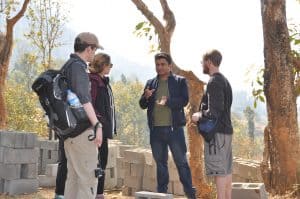The Impact of Data in Recovering from a Natural Disaster
Contributed by Jeremy Zechar
Hello, dear reader from the future. Perhaps you’re reading this without context, so allow me to set the scene. In March of 2017, RMS invited me, an unsuspecting client, to join their Impact Trek to Nepal. Seven other trekkers and I visited Build Change, an organization whose Nepali operation seeks to help improve construction and retrofitting practices in the villages struck hardest by the April 2015 Gorkha earthquake.
Building Change in Nepal
Contributed by Amy Carter
Having just returned from the RMS Impact Trek in Nepal I felt encouraged to write about the tremendous work which Build Change is doing following the devastating earthquake in April 2015. My awareness of the charity only really came to light when RMS announced they would be organizing the impact trek and choosing three clients to take with them. I was lucky enough to be one of those three.
Retrofit Type Design Approved: A Turning Point in Nepal’s Reconstruction!
An estimated 500,000 Nepali earthquake-affected homeowners in Nepal can now choose to retrofit their damaged homes. In doing so, an estimated 2.5 million lives would be made safe from future earthquakes and 30 megatons of construction materials, and 1 billion USD could be saved.
The National Reconstruction Authority (NRA) approved the retrofitting type design submitted by Build Change for stone masonry buildings in mud mortar on June 4th, 2017, after review by Technical Committee including representatives from the Ministry of Urban Development (MoUD) and leading Nepali structural experts.
RMS Impact Trek Nepal 2017: A Change in Perspective

After several days in Nepal, including two days in the field, my views have changed. My assumption was that everyone was building new homes to replace those destroyed by the 2015 earthquake, and that these new homes would be better, safer, and more capable of serving the needs of the people that lived in them. I thought this was simply an issue of technical skill, logistics,
Not Just Houses, but Homes: What it means to be “homeowner-driven”
Contributed by Hailey Mitchell
Have you ever thought about building your own house? Not just selecting the finishes, assembling IKEA furniture, or maybe laying a bathroom tile or two. I mean really starting from scratch: removing soil, mixing concrete (by hand), tying steel rebar, laying blocks… Would it change the way you felt about the building? Now imagine doing this in the wake of immense tragedy while you are living in a temporary shelter.

